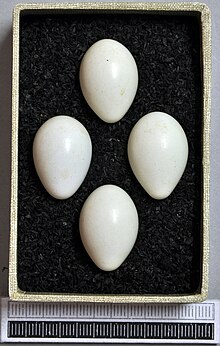Isabel Wheatear
| Isabel Wheatear | ||||||||||||
|---|---|---|---|---|---|---|---|---|---|---|---|---|

Isabel Wheatear (male in plain dress , India) |
||||||||||||
| Systematics | ||||||||||||
|
||||||||||||
| Scientific name | ||||||||||||
| Oenanthe isabellina | ||||||||||||
| ( Temminck , 1829) |
The Isabellsteinschmätzer ( Oenanthe isabellina ) is a songbird from the flycatcher family (Muscicapidae).
description
The Isabellsteinschmätzer is around 15-16.5 inches long and has a wing length of 9.4 to 9.7 inches. It weighs 27 to 31 grams. The long-legged birds are sand-colored on top. They are more yellowish white on the underside. Throat and chest are slightly brownish. The rump is white, the tail is white and has a broad black end band and black central feathers. The over-eye stripe is distinctive to indistinct cream-colored. Fledglings are light gray-brownish on top. They also have yellowish-white feather edges and spots. At the bottom they are dirty white.
distribution and habitat
The Isabellstein Wheatear can be found in areas with little vegetation. Its preferred habitat are sparsely overgrown slopes with individual stones, bare plains and short-grass pastures from the Middle East to Mongolia .
In mid-August and early September, the birds migrate to the winter quarters of East Africa, Arabia and northwest India, from where they return in March and early April.
Reproduction
The varied singing of Isabellsteinschmätzers is pressed, fluting and whistling. Often he also imitates other birds. A “huit” or “wiit-wiit” is typical. During courtship flight, the male flutters over the territory with its tail spread wide.
The breeding season is between April and June. The nest is mostly in abandoned mammal structures in the ground, e.g. B. built by ground squirrels . The female builds the nest at the far end of the cave from stalks, grasses, wolves, hair and feathers. The male accompanies the female when transporting material and keeps watch. The clutch comprises four to seven pale blue, rarely reddish-spotted, 22.8 × 17 millimeter eggs. The incubation period is 14 days. Usually there are two annual broods. Feed both parent birds. The nestlings only leave the cave system when they are fully able to fly.
food
The Isabel Wheatear feeds on insects, larvae, spiders and woodlice.
literature
- Alfred Limbrunner and Manfred Pforr: Ornithological picture atlas of the breeding birds of Europe . Verlag J. Neumann-Neudamm, Melsungen 1980, ISBN 3-7888-0347-9 .
- Wolfgang Makatsch : We determine the birds of Europe . Neumann Verlag, Radebeul 1966.
- Lars Svensson , Peter J. Grant, Killian Mullarney, Dan Zetterström: The new cosmos bird guide. Kosmos, Stuttgart 1999, ISBN 3-440-07720-9 , p. 264 f.
Web links
- Oenanthe ISABELLINA in the endangered Red List species the IUCN 2011. Posted by: BirdLife International, 2009. Accessed November 13, 2011th
- Feathers of the Isabel Wheatear
